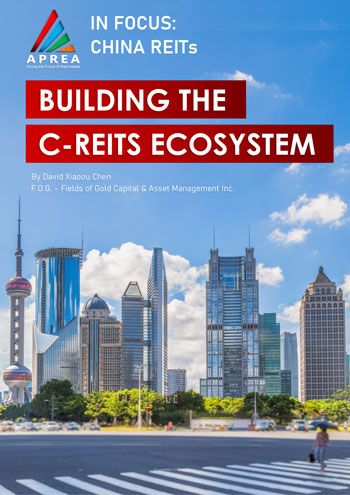
China's first REITs were launched in 2021, following earlier exploration of real estate securitization. As of March 2023, 27 REITs have been listed in China, covering various real estate infrastructure types. The sector is transitioning from volatility to a more stable market, and opportunities for private real estate investment funds in China are expanding.
Looking ahead, Chinese REITs are expected to diversify their assets, improve valuation techniques, enhance management structures, and optimize leverage restrictions. China aims to build a REITs ecosystem based on international standards, with collaboration between local and international stakeholders playing a crucial role in its development.
Download the Report Read MoreThis report was originally published in https://www.cbre.com/insights/reports/global-data-center-trends-2023
Download the Report Read MoreQ2 2023 Singapore Figures report provides the latest commentary and data on net absorption, rents, vacancy, supply and other key metrics in Singapore's office, business parks, retail, residential and industrial markets, along with an analysis of real estate investment activity.
Executive Summary
Office: With a low prevailing vacancy level, gross effective rents for the Core CBD (Grade A) market increased marginally by 0.4% q-o-q.
Business Parks: Leasing activity was focused on renewals as occupiers exercised more caution due to rising global macro economic headwinds. Selected tech and R&D industries gave up space in Q2 2023.
Retail: Prime retail rents for all submarkets rose further in Q2 2023, supported by the continued recovery of the Orchard Road, City Hall/Marina Centre and Fringe areas, and the resilience of the suburban market.
Residential: Private home prices declined for the first time in three years after cooling measures.
Industrial: Prime logistics rentals have grown by 8.6% in H1 2023, despite a weak macroeconomic backdrop mainly due to limited supply.
Investment: Preliminary real estate investment volumes in Singapore for Q2 2023 declined 44.1% q-o-q and 64.3% y-o-y to $3.495 bn, mainly on sharp falls in retail and office asset sales.
This report was originally published in https://www.cbre.com.sg/insights/figures/singapore-figures-q2-2023
Download the Report Read MoreOn 4 July 2023, the Lease Agreements for Retail Premises Bill ("Bill") had its first reading in Parliament. The Bill seeks to make it mandatory for retail lease contracts to comply with the Code of Conduct for Leasing of Retail Premises in Singapore ("Code").
The Code was issued by the Fair Tenancy Pro Tem Committee in 2021 and was last updated in 2022. It sets out guidelines and principles for landlords and tenants of qualifying retail premises to enable fair and balanced lease negotiations. The full Code is available here.
The Bill serves the following functions:
The introduction of the Bill follows a public consultation on the proposed legislation held by the Ministry of Trade and Industry from 18 July 2022 to 5 August 2022.
While adoption of the Code has thus far been voluntary, the Bill – when passed – will require compliance with the Code's leasing principles. Landlords and tenants of retail premises should thus be aware of their obligations under the Code to ensure compliance.
This Update highlights the key features of the framework set out under the Bill and the Code.
Download the Report Read MoreDespite ongoing economic uncertainty, logistics occupiers in Asia Pacific maintain a positive business outlook for the next three years. Expansionary demand continues, although appetite has weakened slightly compared to 2021, with occupiers shifting their focus toward optimising their operations.
CBRE’s 2023 Asia Pacific Logistics Occupier Survey features insights from more than 120 logistics real estate executives in the region on their business outlook, growth plans, strategic opportunities and concerns for the next three years. Key findings include:
Market Sentiment
Supply Chain
Portfolio Strategy
ESG Considerations
This report was originally published in https://www.cbre.com/insights/reports/2023-asia-pacific-logistics-occupier-survey
Download the Report Read More